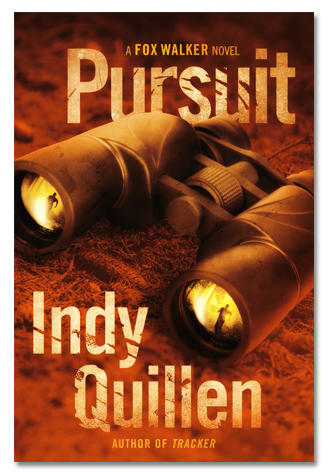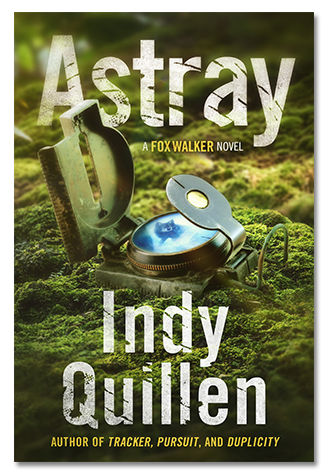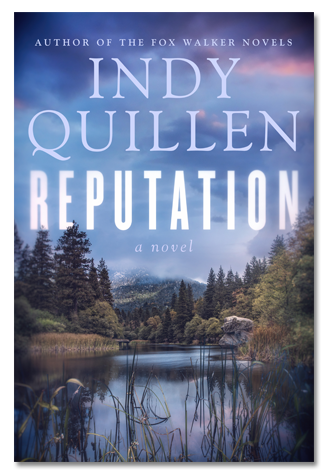More and More People are Getting Back to Gardening
It’s happening for a variety of reasons. For some of you it’s all about having control over the quality of the food you eat. For others it’s also about having a source of food beyond what’s available in the local supermarket. And for still others it’s about having the knowledge and experience to be self-reliant.
This is a Good Thing.
What better way to be self-reliant than to have the knowledge to grow your own food? And it’s also been proven we’ve depleted our soils with the large commercial farming practices (not to mention the heavy over-use of pesticides), and vegetables grown in depleted soils are not as nutritional. We can grow our own foods, keep them organic and use rich soils for great nutritional value.
But What if You Don’t Have a Large Plot of Land for a Garden?
As most of you know, I used to live in the Midwest, out in the countryside where I could have a huge garden. But for now I live in the suburbs. For now, gone are my days of cultivating a mega garden. But, along with thousands of others, I’ve discovered Container Gardens. And you can too! An apartment balcony or small patio area can yield more than you might imagine if you use the right combination of containers.
 And even if you do have a small plot of land, you might opt to use containers anyway. Example: When I lived in San Diego, my patio garden area could be seen from a popular walking path. I also lived in a community that had an HOA and rules. I had to design my garden in such a way as to be pleasing to others who might pass by. And since it was connected to my patio, I wanted it to be pleasant to view as well. One way to do that was by placing my veggies in containers and positioning them in and among my potted herbs, decorative flowers and succulents. And yes, flowers have a place in a vegetable garden. Attracting pollinators, such as bees, is always important! Hanging pots can grow food – just look at the strawberries on mine! So although at first glance my garden looked decorative, it produced food as well.
And even if you do have a small plot of land, you might opt to use containers anyway. Example: When I lived in San Diego, my patio garden area could be seen from a popular walking path. I also lived in a community that had an HOA and rules. I had to design my garden in such a way as to be pleasing to others who might pass by. And since it was connected to my patio, I wanted it to be pleasant to view as well. One way to do that was by placing my veggies in containers and positioning them in and among my potted herbs, decorative flowers and succulents. And yes, flowers have a place in a vegetable garden. Attracting pollinators, such as bees, is always important! Hanging pots can grow food – just look at the strawberries on mine! So although at first glance my garden looked decorative, it produced food as well.
Everyone will have a different set of circumstances, but by sharing mine I hope I can give you some ideas for your own situation.
Yes – There is a Learning Curve. But Practice Makes Perfect!
I’m going to be honest here. This is my first foray into serious container gardening. This is going to be far different then planning and maintaining my huge gardens in the past. I’m sure I’ll have some challenges, failures and lessons to learn as I go along. But hey, I have to start somewhere or I’ll never learn how to do this. So I thought I’d share my experiences here with you as I go along. Maybe I can help you get an easier start and skip some of my mistakes along the way.
Garden Containers:
 There are so many different ways to go when choosing containers. You can pick pretty decorated ceramic pottery, plastic faux pottery pots, or simple clay pots. Make sure you research and understand the positive and negative factors for each type of pot you choose. Make sure each has drainage holes or a way to add them. Understanding how to water the plants in each type of container is key!
There are so many different ways to go when choosing containers. You can pick pretty decorated ceramic pottery, plastic faux pottery pots, or simple clay pots. Make sure you research and understand the positive and negative factors for each type of pot you choose. Make sure each has drainage holes or a way to add them. Understanding how to water the plants in each type of container is key!
I’ll be planting my herbs in smaller clay pots to start out. But as they grow larger and need to be re-potted I plan to use more decorative pots, and intermingle the herbs in and among my potted flowers.
 I’ve decided to use large rolling containers for the garden veggies I’m planting, since I want to plant some of my veggies as seeds. The larger open area will accommodate putting in a few rows for different seed varieties. When I’ve harvested all of the produce, I can reseed it with something else, for a second planting. The cart I chose has a built-in watering system with drainage, which will help me keep the proper amount of moisture in the soil at all times. It even has wheels so I can move it to wherever I need for sunlight or shade.
I’ve decided to use large rolling containers for the garden veggies I’m planting, since I want to plant some of my veggies as seeds. The larger open area will accommodate putting in a few rows for different seed varieties. When I’ve harvested all of the produce, I can reseed it with something else, for a second planting. The cart I chose has a built-in watering system with drainage, which will help me keep the proper amount of moisture in the soil at all times. It even has wheels so I can move it to wherever I need for sunlight or shade.
 There are all kinds of vertical gardens available that might be perfect for an apartment balcony or limited space. Remember that hanging basket of strawberries!
There are all kinds of vertical gardens available that might be perfect for an apartment balcony or limited space. Remember that hanging basket of strawberries!
A simple trellis got my blackberry vines up off the ground and adds a nice contrast to the wall. I’ve seen articles about planting potatoes in burlap bags. Let your imagination run free…what about that old oak barrel, the wooden handcart or tin watering can? You might be surprised at what you come up with!
A Word About Soil: There are all types of bagged soil you can purchase. Make sure you pick out one that is specifically formulated for pots or containers, instead of gardening soil (meant for in ground planting). Soils created for containers allow better drainage for water, yet hold moisture better over time.
Deciding What to Plant:
Vegetable and Herb Plants come in all sorts of shapes and sizes and growing habits. Some are tall and bushy, others like to vine, some like lots of sunlight, and others prefer a little shade. Make sure you read and follow the growing instructions that come with each plant or seed packet.
To start out, think about what vegetables you typically purchase at the store or farmer’s market. Okra might sound exotic and fun to grow, but will your family eat it?
Here is a list of suggestions for vegetables commonly used in containers:
 Tomatoes: Almost everyone uses tomatoes in cooking and salads. No store-bought tomato can compare with a fresh picked one! I prefer to purchase a rather large plant for my container garden. I’ve added a decorative planter box to help it blend into my patio area. Although I have started tomatoes from seed for my large garden, you probably only need one or two plants for your smaller patio or balcony container garden, so it’s wiser to purchase a well-established plant. This allows you to get a jump-start on the growing season, as well.
Tomatoes: Almost everyone uses tomatoes in cooking and salads. No store-bought tomato can compare with a fresh picked one! I prefer to purchase a rather large plant for my container garden. I’ve added a decorative planter box to help it blend into my patio area. Although I have started tomatoes from seed for my large garden, you probably only need one or two plants for your smaller patio or balcony container garden, so it’s wiser to purchase a well-established plant. This allows you to get a jump-start on the growing season, as well.
Peppers: These are easy to grow and most people use them in cooking and salads as well. Again I purchase the plant instead of the seeds. You can start out with a small or large one and have peppers all summer. There are many varieties to choose from. Pick the ones you know your family loves to eat, and maybe try a new one too.
Carrots: I will plant these as seed. After I harvest them all, I may plant something else in its place for the fall season, such as turnips or spinach.
Radishes: These are easy to grow from seeds. They are a great project for kids because they grow so fast. I plan to plant a couple of rows every few weeks apart, to keep a steady supply all summer.
Green Onions: Another veggie planted as seed and nice to have on hand for salads or sandwiches. Make sure you pull them before they get too big or flower (and go to seed).
Lettuce and Spinach: These plants like cooler weather so plant early and then replace with a summer veggie after they’ve been harvested. Or plant them in the fall after summer produce is done.
Herbs: I like to grow herbs that I commonly cook with. I purchase them as plants, instead of seed, as I typically only need one plant for each variety. Favorites are: Basil, Oregano, Thyme, Parsley, Sage, Rosemary and Cilantro. What you choose should fit the foods you like to prepare.
What About Plants that Like to Vine?
Although you may have limited space, you can incorporate a trellis, poles or a lattice with the potted plants that like to spread out. You can experiment and see what works best for each variety. Here are some plants that fit the criteria:
- Pole beans (green beans)
- Sugar snap peas
- Most squash, such as; zucchini, acorn squash and butternut squash
- Cucumbers.
Final Note: Your container garden will be unique. It can change as the season changes. The great advantage of having containers is that you can move the plants as needed, in order to give them the best advantage for sunshine and space to grow. As my garden gets more established I will slowly add in more decorative plants and large plants to give it variety and texture. And it can change every year.


 Being outside in nature is the most basic part of who I am. Besides gaining knowledge about wildlife, I learn lessons about who I am, and surprise myself about what I am capable of achieving. Nature continually inspires me. It is a part of all my writings, no matter the genre or subject matter.
Being outside in nature is the most basic part of who I am. Besides gaining knowledge about wildlife, I learn lessons about who I am, and surprise myself about what I am capable of achieving. Nature continually inspires me. It is a part of all my writings, no matter the genre or subject matter. 





I am fortunate in both having a large property to plant in and no HOA to regulate what I can do with it. I tried growing strawberries in a container from my deck in addition to the ones in the yard but found it was hard to keep them wet enough not to dry out. I will be building larger containers to keep on my deck to serve as a salad garden where we can take plates out on the deck and clip our dinner without having to go out to the yard to search among the various beds.
I do miss my large garden, but glad I’ve found an alternative for now. I too struggle keeping the hanging baskets moist enough – they seem to require watering once a day, at the minimum, but I do so love strawberries, so I’m willing to do the work. I’m really loving this large rolling garden container cart that I’m using for things like parsley, radishes, carrots and green onions – sounds like it would be perfect for your ‘salad garden’ – and it has a self-watering system built in. I’ll let you know how it works! Enjoy the veggies this summer!
I will be planting tomatoes again this summer. It’s so fun to be able to go out and pick ripe ones when I’m making a salad.
That’s my favorite as well, Jill! Nothing beats a freshly picked tomato still warm from the sunshine! Cheers!